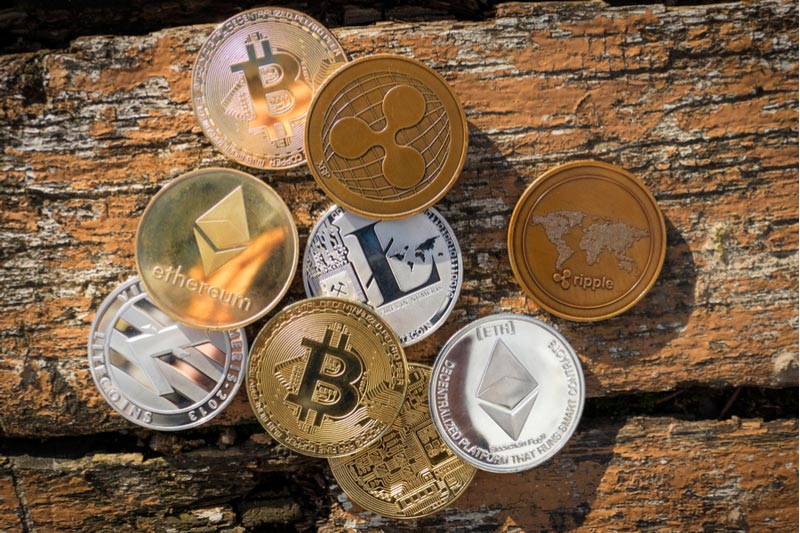2020 ended on a very good note for cryptocurrencies, particularly Bitcoin. The digital asset which began the year with a price of around $7,000 closed at almost $30,000 – an increase of more than 400%. But with a new year upon us, one may wonder if the market can still maintain its momentum.
In this article, I’ll discuss some of the trends that may likely space the crypto space in 2021.
Institutional inflowsIt is common knowledge that Bitcoin’s recent Bull Run can be attributed to the massive inflow of institutional investors and hedge funds. From Grayscale to MicroStrategy, MassMutual, PayPal, and several others, these financial giants were aggressively accumulating digital assets in the fourth quarter of last year. Some of these investors have even called Bitcoin the new gold with Guggenheim analysts predicting a future price of $400k.
Institutional money is expected to keep flowing into Bitcoin and digital assets in 2021. In fact, it is expected to reach record highs.
It can be recalled that leading crypto investment firm, Grayscale, had to temporarily suspend inflows into its Bitcoin Trust in December. Notwithstanding, the firm has added over $4 billion to its assets under management in the last 8 days. Meanwhile, after multiple ETF rejections from the SEC, VanEck has put in another application for a Bitcoin ETF.
There is a long list of traditional finance big guns that will likely join their counterparts in de-risking their portfolio by investing in cryptocurrencies.
Mainstream adoptionOne of the hurdles that have prevented cryptocurrencies from hitting mainstream adoption is utility. By utility, I mean avenues for usage. When compared with the U.S. dollar, can an individual easily find stores that accept Bitcoin? Can you pay for goods on Amazon (NASDAQ:AMZN) or Walmart (NYSE:WMT) using digital assets? The answer is currently no!
With this bottleneck in place, digital assets will continue to remain the spectacle of those who are simply in to take profits. However, cryptocurrencies will become more accessible to retail investors and end-users.
Thanks to popular payment services like PayPal and Square, millions of customers will be able to use digital assets to pay for products. In November, PayPal’s CEO, Dan Schulman, told the media that customers would be able to buy, sell, and store Bitcoin come 2021.
Early next year we’re going to allow cryptocurrencies to be a funding source for any transaction happening on all 28 billion of our merchants. That will significantly bolster the usage of cryptocurrencies.For some context, PayPal processes five million transactions daily.
With the infrastructure and user base already on the ground, these companies will likely diversify the access points and deploy user-friendly interfaces that will give everyday users access to join the growing ranks of crypto users.
Beyond PayPal and Square, the success of Facebook’s Diem could be a major deal-breaker for the crypto space considering the company’s 2.7 billion users across its suite of apps.
Decentralized Finance and EthereumIt is impossible to discuss the cryptocurrency industry in 2020 without mentioning Decentralized Finance (DeFi). Before Bitcoin became the talk of the day in 2020, DeFi was making the headlines.
Unlike any other sub-sector in the crypto industry, DeFi grew phenomenally. The sector began the year with its total value of locked (TVL) assets sitting at $683.35 million. This figure grew to over $14 billion by the end of 2020, a growth of over 2,000%.
DeFi is trying to bridge the gap between the unbanked and traditional finance. With segments like decentralized exchanges, insurance, lending, mutual funds, and derivatives under DeFi, the sector has a lot of potentials to grow.
Meanwhile, a significant percentage of DeFi protocols have been built on the Ethereum blockchain. The 2020 DeFi boom boosted the usage of Ethereum. This has rekindled the interest of investors in the digital currency and network.
As a protocol, Ethereum went through some important milestones in 2020. The launch of ETH 2.0 is only the beginning of improving the network’s scalability. But just like Bitcoin, the demand for ETH 2.0 staking contracts has exceeded its supply. As of press time, deposits into the Beacon Chain contract had more than 2.1 million ETH.
Ethereum recorded over $1 trillion in transactions in 2020. As more projects go live, this amount will grow in 2021 since the network supports every major crypto product; from DeFi to stablecoins, NFT applications, and crypto lending. Moreover, institutional investors have also started accumulating the digital asset and this could lead to positive price actions.
Regulation2021 is expected to be met with a more refined regulatory structure. To date, no nation has clearly defined its regulatory requirements for the operation of digital assets. Although a number of centralized exchanges have KYC procedures in place, things may stiffen up. Governments on the ground of terrorism and money laundering will try to get the data of crypto users.
The truth is that governments would not want to lose their control. Cryptocurrencies are threatening the control that governments enjoy in central banks and financial institutions. And this has given birth to government-backed digital assets (CBDCs).
It won’t come as a surprise if regulatory bodies begin to clamp down on digital assets that threaten their power.
